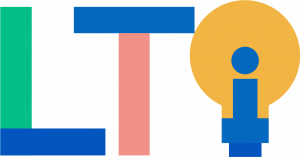References
Boesch, B., Reynolds, C., & Patton, J. (2015). ePortfolios as a tool for integrative learning: Building classroom practices that work. In E. Railean (Ed.), Handbook of research on applied learning theory and design in modern education. IGI Global
Brennan, K., & Resnick, M. (2013). Imagining, creating, playing, sharing, reflecting: How online community supports young people as designers of interactive media. In C. Mouza, & N. Lavigne (Eds.), Emerging technologies for the classroom, explorations in the learning sciences, instructional systems and performance technologies. (pp. 253-269). London; New York: Springer Science+Business.
How online community supports young people as designers of interactive media. In C. Mouza, & N. Lavigne (Eds.), Emerging technologies for the classroom, explorations in the learning sciences, instructional systems and performance technologies. (pp. 253-269). London; New York: Springer Science+Business.
Bush, G. (2006). Learning about learning: From theories to trends. Teacher Librarian, 34(2), 14.
Franklin, U. M. (1989) The Real World of Technology, Part 1 Retrieved from https://www.cbc.ca/radio/ideas/the-1989-cbc-massey-lectures-the-real-world-of-technology-1.2946845
Franklin, U. M. (2004). The real world of technology (Rev. ed.). Toronto: Anansi.
Gee, J. P. (2005). Learning by design: Good games as learning machines. E-learning and digital media, 2, 1, 5-15.
Gee, J. P. (2011). Video games, learning and literacy. [YouTube, 6 mins.] Retrieved from https://youtu.be/LNfPdaKYOPI
Grush, M. (2014, November 12) Open Pedagogy: Connection, Community, and Transparency. Campus Technology. Retrieved from https://campustechnology.com/articles/2014/11/12/open-pedagogy-connection-community-and-transparency.aspx
Ifenthaler, D. (2018). Digital workplace learning: Bridging formal and informal learning with digital technologies. Cham: Springer International Publishing. doi:10.1007/978-3-319-46215-8
Kafai, Y. (2006). Playing and making games for learning: Instructionist and constructionist perspectives for game studies.Games and Culture, 1(1), 36-40.
Levine, A. (2017, February 21). The Challenge of Non-Disposable Assignments. [Web log post] Retrieved from https://cogdogblog.com/2017/02/non-disposable-assignments/
Orey, M., Branch, R. M., & SpringerLink ebooks – Education. (2017;2016;). Educational media and technology yearbook: Volume 40. Cham, Switzerland: Springer. doi:10.1007/978-3-319-45001-8
The New London Group. (1996). A pedagogy of multiliteracies: Designing social futures. Harvard Educational Review, 66(1), 60-93.
Tobin, T. J. (2014). Increase online student retention with universal design for learning. Quarterly Review of Distance Education, 15(3), 13.
Stager, G. (2014). Seymour Papert – Inventor of everything. TEDx talks. Retrieved from https://www.youtube.com/watch?v=6-dFTmdX1kU
Stager, G. (2017). Eight Big Ideas Behind the Constructionist Learning Lab. Retrieved from http://dailypapert.com/eight-big-ideas-behind-the-constructionist-learning-lab/
Strate, L., & Lum, C. M. K. (2000). Lewis mumford and the ecology of technics. New Jersey Journal of Communication, 8(1), 56-78. doi:10.1080/15456870009367379
Turvey, K., & Pachler, N. (2016). Problem spaces. (pp. 113-130). Hoboken, NJ: John Wiley & Sons, Inc.
Wiley, D. (2013, October, 21). What is Open Pedagogy? [Web log Post] Retrieved from https://opencontent.org/blog/archives/2975

